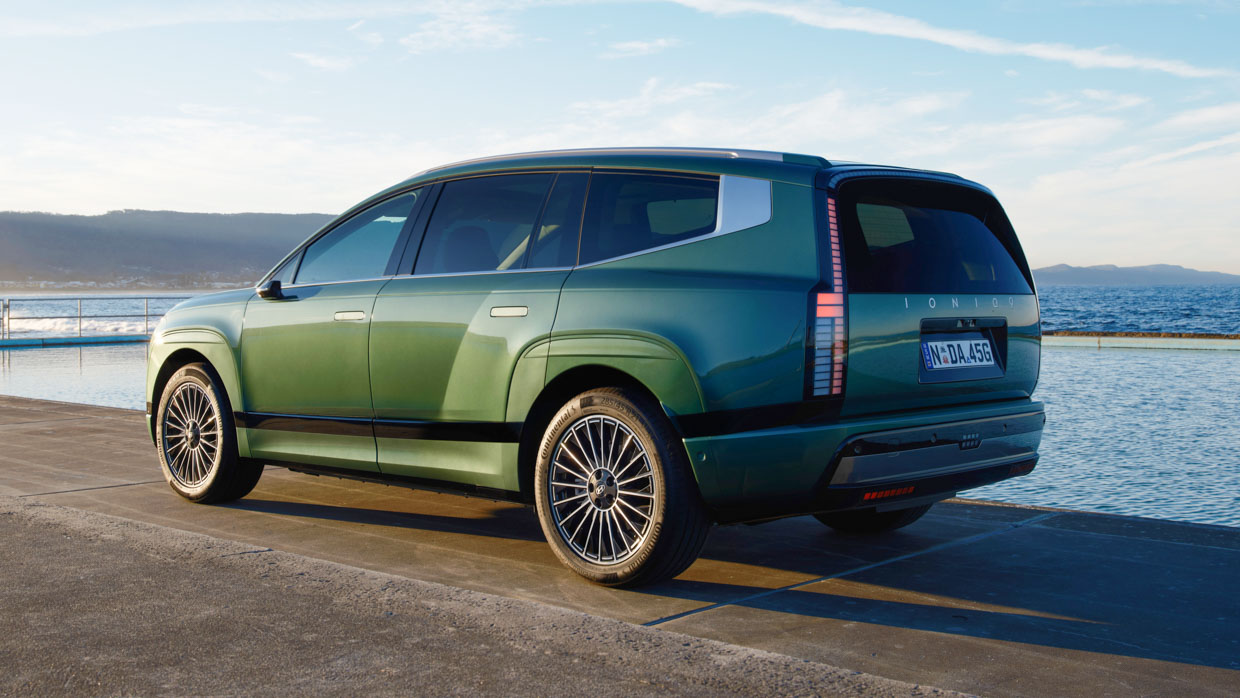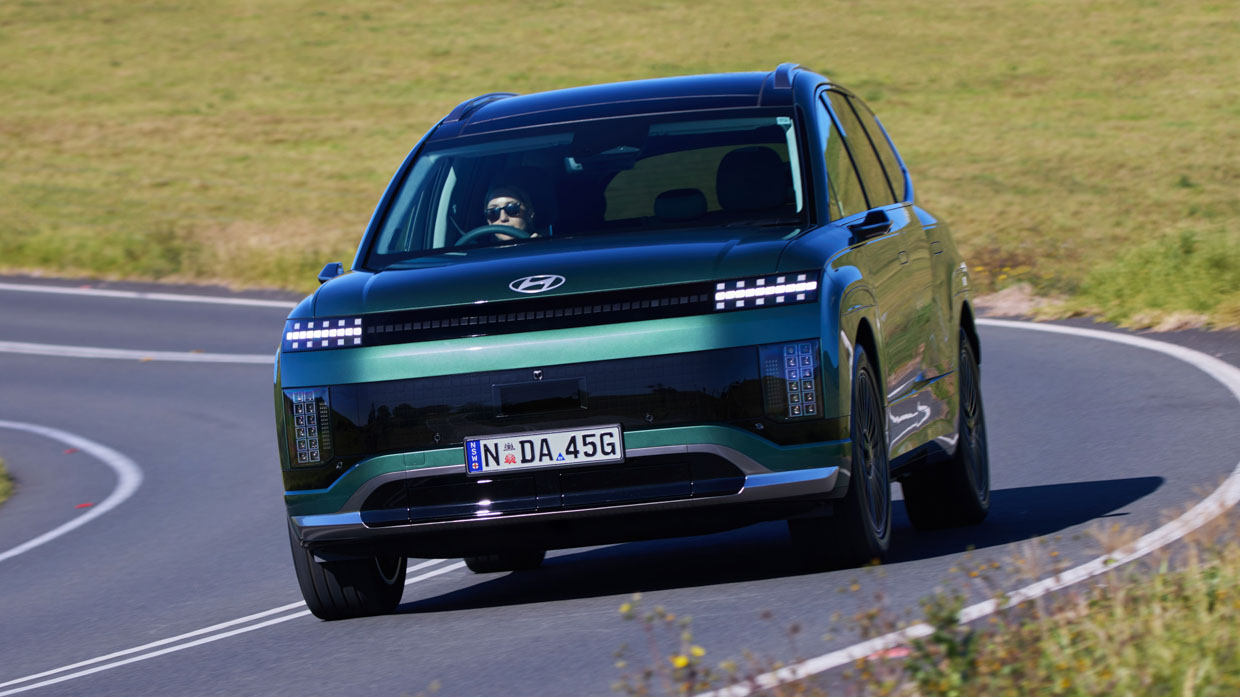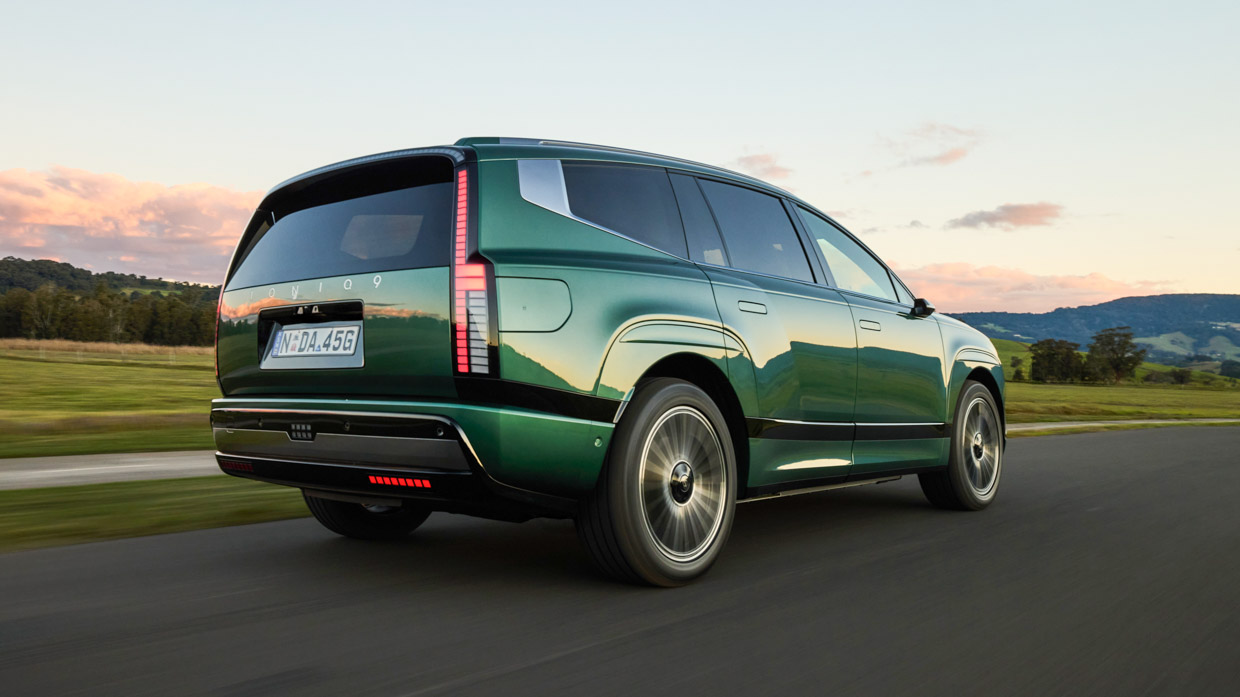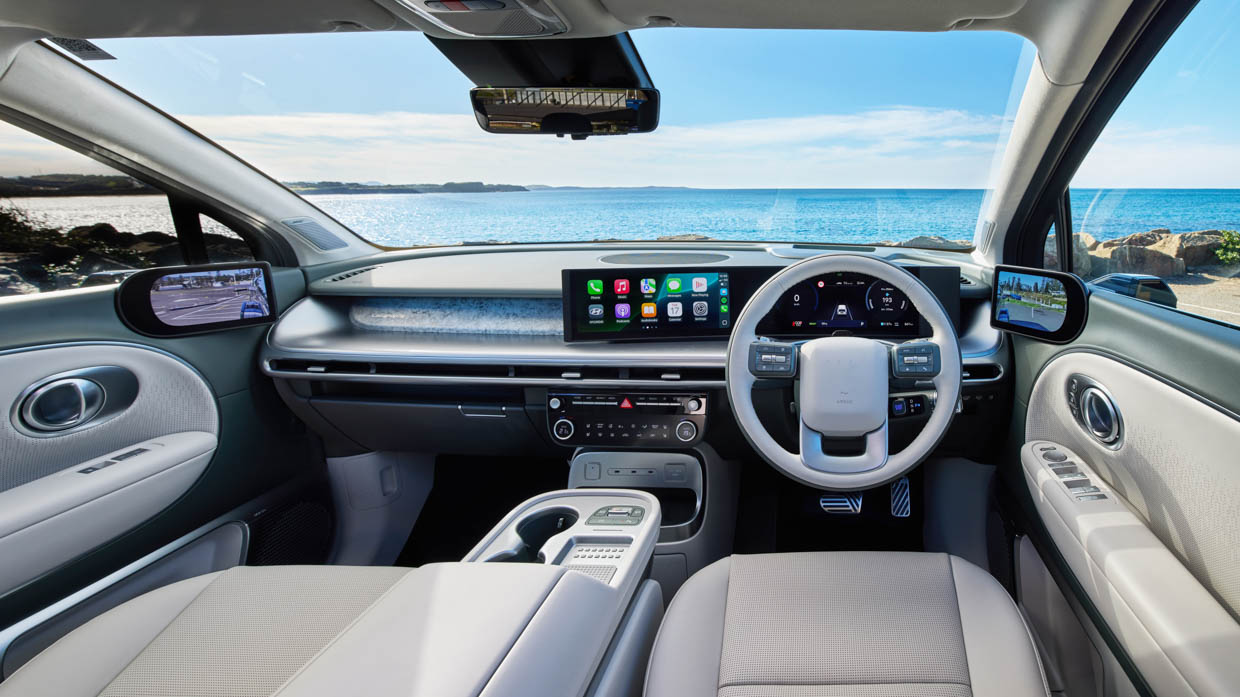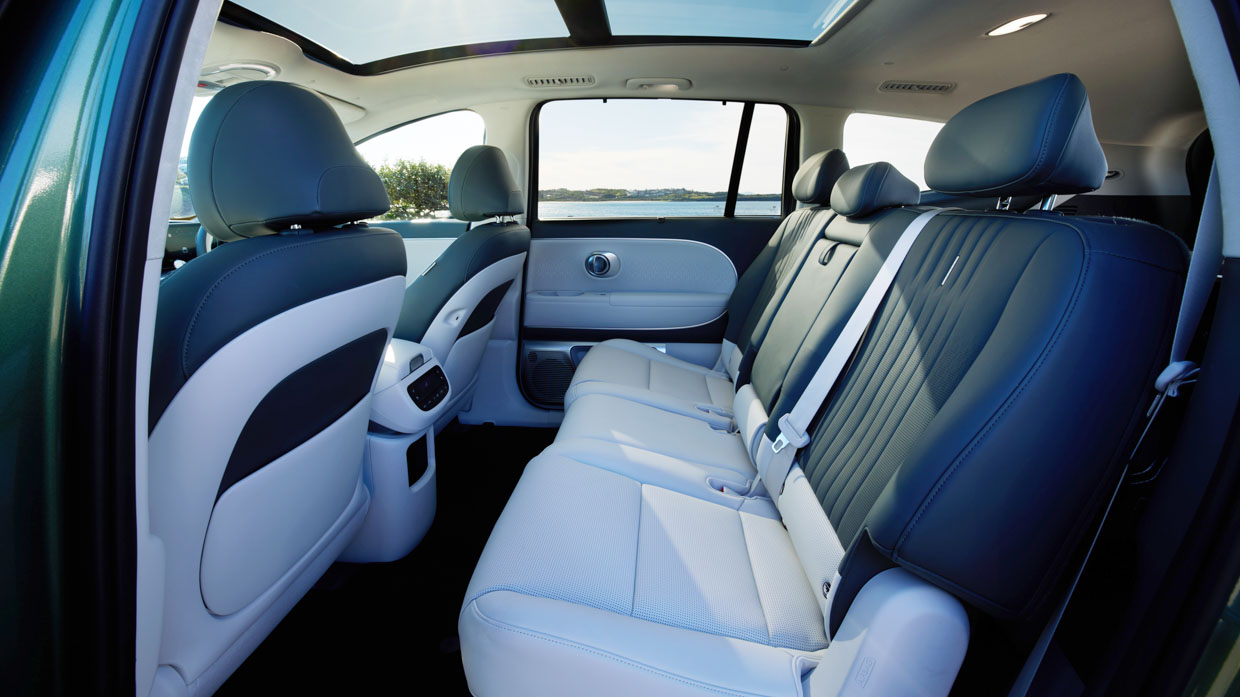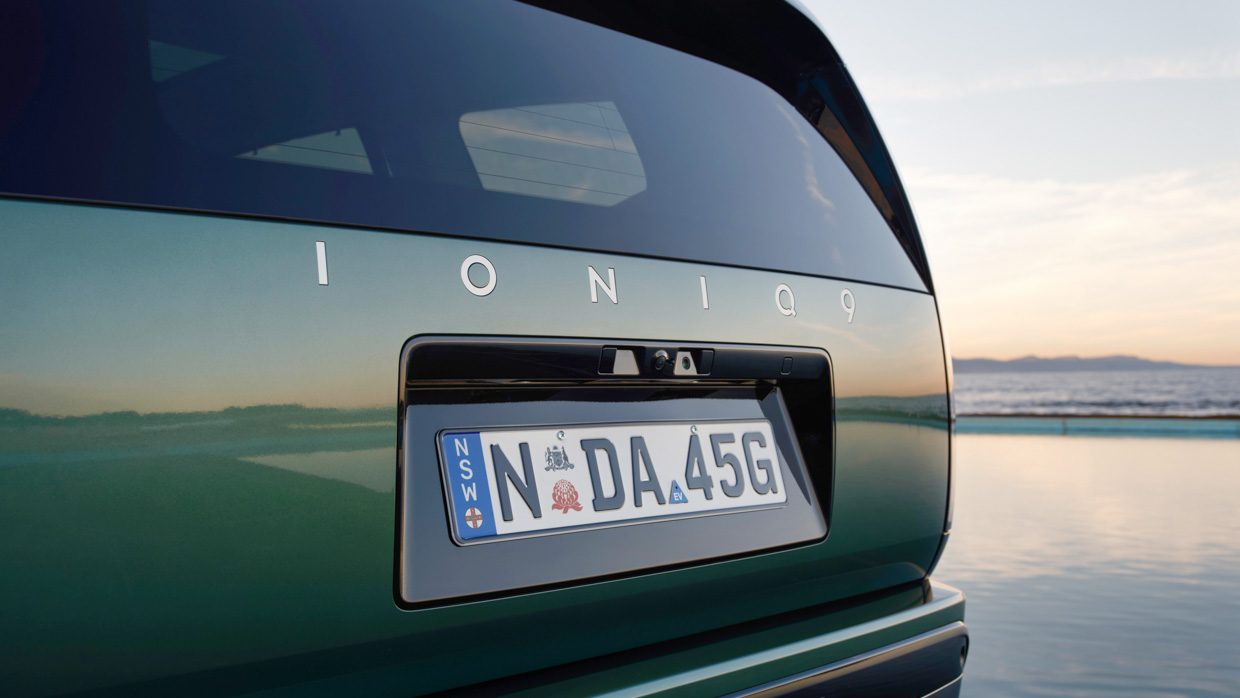-
Car Reviews
- All reviews
- Midsize SUVs
- Small cars
- Utes
- Small SUVs
- Large SUVs
- Large cars
- Sports SUVs
- Sports cars
- Vans
Latest reviews
- Car News
-
Car Comparisons
Latest comparisons
- Chasing Deals
New Hyundai electric flagship launches in Australia flaunting captain’s chairs, all-wheel drive, and a starting price of $119,750
Hyundai has launched its largest and most expensive luxury car with just one range topping grade: Calligraphy.
The Ioniq 9 starts from $119,750 (RRP), slotting just below sister-brand Kia’s equivalent car, the top-spec EV9 GT-Line, which is priced from $121,000 (RRP).
Options for the Ioniq 9 are few and far between, with the standout being a six-seat captain-chair configuration, for an additional $2000 (RRP) premium.
In six-seat layout, the Ioniq 9’s spacious cabin is reminiscent of China’s quirky Zeekr 009 electric people mover, which measures just 200mm longer than the Ioniq and costs $139,900 (RRP).
In fact, the Zeekr 009 is arguably one of the Ioniq 9’s closest rivals, aside from its Korean sibling. Pricing and specification for the 009 are certainly in a closer league to the Ioniq 9 when compared to the Mercedes-Benz EQS 450, which is priced from $194,900 (RRP).
Further, the Ioniq 9 is dimensionally similar to the Zeekr van, measuring 5060mm long 1980mm wide, and 1790mm tall, with a huge 3130mm wheelbase – only 100mm shorter than the 009, and earning the title of Hyundai’s largest car… That is until the second-generation Palisade arrives later this year.
The Hyundai Ioniq 9 is built upon Hyundai-Kia’s E-GMP electric vehicle platform, which is shared across a wealth of models including the Ioniq 6 sedan, EV6 midsize, EV9 large SUV and more.
It features 800-volt electronic architecture and supports a peak DC charge rate of 350kW, meaning a rapid 10 to 80 percent recharge of its 110.3 kWh lithium-ion battery is achieved in 24 minutes.
The combined output of the Ioniq 9 is 314kW/700Nm, split equally between two 157kW electric motors mounted at each axle. The system is capable of propelling the 2725kg Ioniq to 100km/hr in 5.2 seconds, and claims a range of up to 600km (WLTP).
Hyundai has simplified its Ioniq 9 for the Australian market, with the offer of just one trim and two variants — seven seats or six. The Ioniq 9’s exterior follows Hyundai’s trend of futuristic yet simplistic styling, with simplified body lines and a wealth of LED lighting.
The front of the Ioniq 9 features pixel-design LED headlights integrated into a slimline body length grill. The Ioniq’s pumped-up body-integraded wheel arches are filled nicely with 21-inch alloy wheels, which sport chunky ‘noise absorbent’ tyres.
Moving around to the rear, yet more pixel design LED lights run from top-to-tip of the Ioniq’s ‘boat-tail’ rear end, which shares a striking resemblance to the now defunct Volvo V70 wagon.
Inside, the Ioniq 9 has all the modern creature comforts expected of a large premium SUV, including Nappa leather, 16-way electronically adjustable front seats, front and second row seat heating and ventilation, and a panoramic sunroof.
Key driver convenience features include a heads up display, 12.3-inch infotainment touchscreen, 12.3-inch digital instrument cluster, intelligent radar cruise, and a 14-speaker Bose sound system.
It additionally features self-levelling rear dampers, which Hyundai claims will adjust the rear suspension to account for payload in the rear of the car. The front dampers are non-adjustable.
In six-seat configuration, the Ioniq 9’s interior sports second-row captain’s chairs, with a sliding centre console for front seat passengers.
A wealth of standard safety features are prevalent throughout the Ioniq 9, including:
Standard equipment for the Hyundai Ioniq 9 Calligraphy includes:
| 2025 Hyundai Ioniq 9 Calligraphy | Price |
|---|---|
| Seven-seat variant | $119,750 |
| Six-seat variant | $121,750 |
Latest news
About Chasing cars
Chasing Cars reviews are 100% independent.
Because we are powered by Budget Direct Insurance, we don’t receive advertising or sales revenue from car manufacturers.
We’re truly independent – giving you Australia’s best car reviews.
